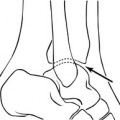Chapter 4 Liver, biliary tract and pancreas
Methods of imaging the hepatobiliary system
PLAIN FILMS
May be useful to demonstrate air within the biliary tree or portal venous system, opaque calculi or pancreatic calcification.
ULTRASOUND OF THE LIVER
Indications
Technique
Additional views
Spleen
The spleen size should be measured in all cases of suspected liver disease or portal hypertension. 95% of normal adult spleens measure 12 cm or less in length, and less than 7×5 cm in thickness. The spleen size is commonly assessed by ‘eyeballing’ and measurement of the longest diameter.1 In children, splenomegaly should be suspected if the spleen is more than 1.25 times the length of the adjacent kidney,1 normal ranges have also been tabulated according to age and sex.2
1 Loftus W.K., Metreweli C. Ultrasound assessment of mild splenomegaly: spleen/kidney ratio. Pediatr. Radiol.. 1998;28(2):98-100.
2 Megremis S.D., Vlachonikolis I.G., Tsilimigaki A.M. Spleen length in childhood with US: normal values based on age, sex, and somatometric parameters. Radiology. 2004;231(1):129-134.
Albrecht T., Hohmann J., Oldenburg A., et al. Detection and characterisation of liver metastases. Eur. Radiol.. 2004;8(14 Suppl):25-33.
Kim T.K., Jang H.J., Burns P.N., et al. Focal nodular hyperplasia and hepatic adenoma: differentiation with low-mechanical-index contrast-enhanced sonography. Am. J. Roentgenol.. 2008;190(1):58-66.
Kono Y., Mattrey R.F. Ultrasound of the liver. Radiol. Clin. North Am.. 2005;43(5):815-826.
Shapiro R.S., Wagreich J., Parsons R.B., et al. Tissue harmonic imaging sonography: evaluation of image quality compared with conventional sonography. Am. J. Roentgenol.. 1998;171:1203-1206.
Wilson S.R., Burns P.N. An algorithm for the diagnosis of focal liver masses using microbubble contrast-enhanced pulse-inversion sonography. Am. J. Roentgenol. 2006;186(5):1401-1412.
Ultrasound of the Gallbladder and Biliary System
Technique
Additional views
Assessment of gallbladder function
Extrahepatic bile ducts
Ultrasound of the Pancreas
Technique
The pancreatic duct should not measure more than 3 mm in the head or 2 mm in the body.
Endoscopic US (see p. 81) and intra-operative US are useful adjuncts to transabdominal US. EUS may be used to further characterize and biopsy pancreatic mass lesions. Intra-operative US is used to localize small lesions (e.g. islet cell tumours prior to resection).
Eloubeidi M.A., Jhala D., Chhieng D.C., et al. Yield of endoscopic ultrasound-guided fine-needle aspiration biopsy in patients with suspected pancreatic carcinoma. Cancer. 2003;99(5):285-292.
Rizk M.K., Gerke H. Utility of endoscopic ultrasound in pancreatitis: a review. World J. Gastroenterol.. 2007;13(47):6321-6326.
Computed Tomography of the Liver and Biliary Tree
Indications
Multi-phasic contrast-enhanced CT
The fast imaging times of helical/multi-slice CT enable the liver to be scanned multiple times after a single bolus injection of contrast medium. Most liver tumours receive their blood supply from the hepatic artery, unlike the hepatic parenchyma, which receives 80% of its blood supply from the portal vein. Thus liver tumours (particularly hypervascular tumours) will be strongly enhanced during the arterial phase (beginning 20–25 s after the start of a bolus injection) but of similar density to enhanced normal parenchyma during the portal venous phase. Some tumours are most conspicuous during early-phase arterial scanning (25 s after the start of a bolus injection), others later, during the late arterial phase 35 s after the start of a bolus injection. Thus a patient who is likely to have hypervascular primary or secondary liver tumours should have an arterial phase scan as well as a portal venous phase CT scan (see above). Early and late arterial phase with portal venous phase is appropriate for patients with suspected hepatocellular cancer (triple phase). In general, late arterial and portal venous scans are appropriate to investigate suspected hypervascular metastases, although an alternative strategy would be to perform an unenhanced scan followed by a portal venous phase scan.
1 Hashimoto M., Itoh K., Takeda K., et al. Evaluation of biliary abnormalities with 64-channel multidetector CT. Radiographics. 2008;28(1):119-134.
2 Schindera S.T., Nelson R.C., Paulson E.K., et al. Assessment of the optimal temporal window for intravenous CT cholangiography. Eur. Radiol.. 2007;17(10):2531-2537.
Francis I.R., Cohan R.H., McNulty N.J., et al. Multidetector CT of the liver and hepatic neoplasms: effect of multiphasic imaging on tumor conspicuity and vascular enhancement. Am. J. Roentgenol.. 2003;180(5):1217-1224.
Erratum in. Am. J. Roentgenol.. 2003;181(1):283.
Oto A., Tamm E.P., Szklaruk J. Multidetector row CT of the liver. Radiol. Clin. North Am.. 2005;43(5):827-848.
Computed Tomography of the Pancreas
Technique
Fletcher J.G., Wiersema M.J., Farrell M.A., et al. Pancreatic malignancy: value of arterial, pancreatic, and hepatic phase imaging with multi-detector row CT. Radiology. 2003;229(1):81-90.
Goshima S., Kanematsu M., Kondo H., et al. Pancreas: optimal scan delay for contrast-enhanced multi-detector row CT. Radiology. 2006;241(1):167-174.







